March is a busy month for renal dietitians! Not only is it Kidney Health Month but it is also Nutrition Month! I was fortunate to attend a conference on renal nutrition in Vancouver earlier this month and came away with a lot of wonderful ideas and information. From kidney carbohydrate counting guides to ethnic diets to cooking demonstrations, there are a huge range of initiatives happening in dialysis units.
Here in Kitchener we’re getting ready to do a presentation to our patients on the importance of protein for dialysis patients. Did you know that malnutrition is incredibly common in for both hemodialysis and peritoneal dialysis patients? Often, dialysis patients are dealing with many different medical conditions, diets, constant travel to and from dialysis and on top of all that need to replace the protein that is lost during dialysis. Malnutrition can lead to poor wound healing, increased risk of hospitalization and higher mortality risk.
A recent Canadian study has shown that patients who are admitted to hospital tend to leave more malnourished than they came in. All jokes about hospital food aside, that leaves those of us working in healthcare very concerned about keeping our patients well nourished. For more information on this study, check out the Canadian Malnutrition Task Force website: nutritioncareincanada.ca.
Getting enough protein can definitely be a challenge for dialysis patients (in and out of hospital). Here are some suggestions for how to get enough:
- Choose a source of protein at each meal (eggs, chicken, fish, pork, beef, cheese)
- Eat the protein part of your meal first
- Make your snacks count with protein (try low sodium cottage cheese and fruit)
- Increase your serving size of protein foods
- Get creative – have French toast or add a hard-boiled egg to your salad.
- Add chopped chicken or cooked shrimp to your pasta or rice
- Try adding pasteurized egg whites (safe to eat without cooking and found where eggs are in the grocery store) to cranberry juice, soup, or mashed potatoes.
- There are protein supplements on the market but it is important to talk to your dietitian about which supplements are safe for you. Some are high in potassium or phosphorus and not all of them are a great source of protein.
So what about when you don’t feel like eating meat? Here is a recipe for a quick and delicious smoothie that is light and refreshing:
Blueberry Smoothie (3 servings*)
1 ¼ c pineapple juice
2c frozen blueberries (slightly thawed)
3/4c pasteurized egg whites
2 tsp sugar or Splenda
1/2c water (can use more or less as desired depending on how thick you like your smoothie)
Put all ingredients in a blender and puree. Enjoy!
* 1 serving = 1 protein + 1 fruit choice

I am still new to this kidney thing. I really don’t understand hemodialysis or peritoneal dialysis but, you can be sure, that in 3-4 months I will have learned all that I can just as I did with my diabetes. These page you have here are wonderful to help all kidney patients new and old. Thanks.
I’m glad you found the information helpful! You can also find our patient handbooks here: https://kidney.ca/manual. Best of luck!